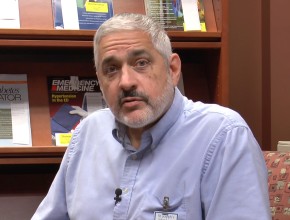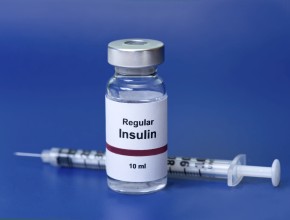Too much of a good thing: excess oxygen may harm acutely ill adults
McEvoy JW. Excess oxygen in acute illness: adding fuel to the fire. Lancet. 2018 Apr 28;391(10131):1640-2. doi: https://doi.org/10.1016/S0140-6736(18)30546-4.
This meta-analysis included 25 clinical experiments (randomized controlled trials) in which groups of acutely ill patients received either liberal or conservative oxygen therapy. A total of >16,000 patients enrolled in those studies had emergency surgery, myocardial infarction, cardiac arrest, brain injury (traumatic or stroke), or sepsis, or simply were admitted to critical care. Median baseline oxygenation of arterial blood was >96%, with some trials excluding any patients with hypoxemia. Median concentration of oxygen across the trials was 52% in the liberal group and 21% in the conservative group. In all trials hypoxemia was treated as required, with treatment goals differing between the liberal and conservative groups.
Liberal application of oxygen, as opposed to the more conservative approach (but still involving treatment of hypoxemia), was associated with about a 20% increase in mortality (relative risk [RR], 1.21; 95% CI, 1.03-1.43). Of note, hospital mortality among those acutely ill patients was <4%, indicating still a somewhat low illness severity.
On the basis of available data, the authors conclude that the use of supplemental oxygen aimed at arterial hemoglobin oxygen saturation >96% may have unfavorable consequences.
Balanced crystalloids vs saline in critically ill adults
Myburgh J. Patient-Centered Outcomes and Resuscitation Fluids. N Engl J Med. 2018 Mar 1;378(9):862-863. doi: 10.1056/NEJMe1800449. Epub 2018 Feb 27. PubMed PMID: 29485927.
This study performed in several intensive care units suggests that among critically ill patients the exclusive use of normal saline, rather than balanced crystalloids, may have adverse consequences.
Almost 16,000 patients were randomized to receive either saline or balanced crystalloids (fluids with a lower chloride concentration; either Ringer solution or Plasma-Lyte A). In-hospital mortality among all patients was slightly >10%, indicating a moderate illness severity. The probability of death or significant renal injury (either new renal replacement therapy or persistent doubling of the creatinine level) was 14.3% in the balanced crystalloids group versus 15.4% in the saline group (odds ratio [OR], 0.90; 95% CI, 0.82-0.99), with a non–statistically significant trend for difference in mortality at 30 days (10.3% vs 11.1%).
It is likely these results will lead to a decrease in the use of normal saline among critically ill patients, at least as the sole crystalloid.
Colonoscopy surveillance after colorectal cancer resection: synopsis of US guidelines
Kahi CJ, Boland CR, Dominitz JA, et al; United States Multi-Society Task Force on Colorectal Cancer. Colonoscopy Surveillance After Colorectal Cancer Resection: Recommendations of the US Multi-Society Task Force on Colorectal Cancer. Gastroenterology. 2016 Mar;150(3):758-768.e11. doi: 10.1053/j.gastro.2016.01.001. Epub 2016 Feb 10. Review. PubMed PMID: 26892199.
This synopsis summarizes the 2016 US Multi-Society Task Force guideline on colorectal cancer surgery follow-up.
The goal of these guidelines was to provide recommendations and suggestions (conditional or weak recommendations) on endoscopic surveillance following colorectal cancer resection. Strong recommendations were issued when most individuals would want the recommended course of action, clinicians should follow this course of action in most situations, and recommendations could serve as policy and a performance measure. With weak recommendations (suggestions), the majority of patients would want the suggested course of action but many would not, clinicians should tailor their actions to individual circumstances and patients’ preferences, and the subject of policy may be the consideration of a given intervention rather than its institution. (The concepts of strong and weak recommendations are used according to the GRADE, or Grading of Recommendations, Assessment, Development, and Evaluation, method; see our introduction to the GRADE system.)
Selected main recommendations:
- Following surgery for colorectal cancer, a surveillance colonoscopy should be performed after 1 year, then 3 years later, and then at 5-year intervals (strong recommendation, low-quality evidence).
- Following surgery for obstructive colorectal cancer, patients should have their first colonoscopy within 3 to 6 months, subsequently 1 year later, then 3 years later, and then at 5-year intervals (strong recommendation, low-quality evidence).
- Following surgery for localized rectal cancer, patients should have a surveillance investigation with flexible sigmoidoscopy or endoscopic ultrasound every 3 to 6 months for the first 2 to 3 years (weak recommendation, low-quality evidence).
Low-quality evidence indicates low confidence in the available evidence.
 English
English
 Español
Español
 українська
українська










